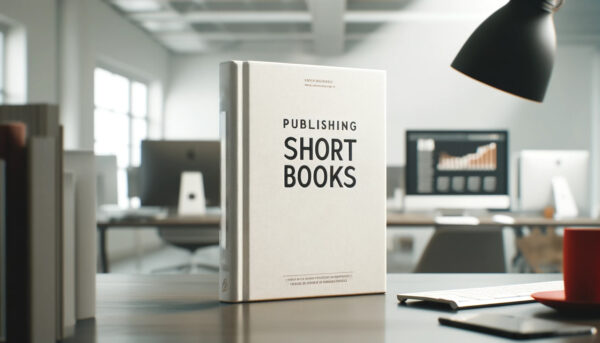There’s something magical about poetry—a single line can carry the weight of an entire story, distill life’s messiest emotions, or transport readers to an entirely different world. Poetry, with its long tradition of blending words and art, has always found a way to endure. But here’s the kicker: while poets have mastered the art of crafting verses, many struggle to find their work a home in the increasingly competitive world of traditional publishing.
This is where self-publishing swoops in like the hero of your poetic journey. Forget endless query letters and rejection slips from editors who may not “get” your style. Self-publishing puts you, the poet, in the driver’s seat. Want to design a stunning book cover? You’re the boss. Need to decide on the trim size, page count, and formatting? That’s all you. Ready to share your unique voice with readers around the world? You’re in control.
This guide walks you through the steps to publish a poetry book—from crafting individual poems to finalizing your poetry collection and marketing it with confidence. Whether it’s your first collection or you’re already a self-published poet looking to refine your process, we’ll show you how to turn your words into art and get your book into the hands of readers who’ll treasure it. Oh, and spoiler alert: it’s easier than you think.
So grab a cup of tea (or something stronger if you’re editing), and let’s dive into the beautiful chaos of self-publishing poetry
Why Self-Publish Your Poetry Book
Self-publishing a poetry book can be a liberating experience for poets, allowing them to maintain creative control and potentially higher royalties. With the rise of self-publishing platforms and tools, it’s easier than ever to produce a high-quality poetry book that showcases your unique voice and style. By self-publishing your poetry book, you can:
- Retain Creative Control: You have the final say over every aspect of your book, from editing and formatting to cover design and marketing. This means your poetry book will be a true reflection of your artistic vision.
- Publish Quickly and Efficiently: Traditional publishing can be a lengthy process, often taking months or even years. Self-publishing allows you to bring your poetry book to market much faster, getting your work into the hands of readers without unnecessary delays.
- Reach a Wider Audience: Self-publishing platforms offer global distribution, enabling you to reach readers around the world. You can build a loyal following of readers who appreciate your unique voice and style.
- Earn Higher Royalties: Traditional publishing often involves sharing profits with publishers, agents, and other intermediaries. By self-publishing, you can keep a larger percentage of the royalties from each book sale.
- Maintain Ownership of Your Work: When you self-publish, you retain all rights to your poetry. This gives you the freedom to make decisions about future publications, adaptations, and other opportunities.
Writing Your Poems: From Ideas to a Completed Manuscript
Every great poetry book starts with a single word. But here’s the thing: writing poetry isn’t just about jotting down your emotions in the middle of the night (although, let’s be honest, it often starts there). To create a compelling poetry collection, you need to approach the writing process with both inspiration and structure, ensuring that the poems written are cohesive and well-organized.
Finding Inspiration for Your Poems
Inspiration can come from anywhere: your daily life, relationships, a dramatic sunset, or even that quirky Instagram feed you can’t stop scrolling. Think about the themes that resonate with you. Is it love, loss, identity, or the absurdity of modern life? Let these ideas guide the poems you write.
How Many Poems Do You Need?
The number of poems in a book depends on the format you choose. A typical poetry book ranges between 40 and 100 poems, depending on the trim size and overall length. For your first collection, aim for around 60–70 poems to keep the book manageable. If you’re writing shorter poems, like haikus or micro-poetry, you may need more content to fill the pages. The remaining poems can be reserved for future promotion or subsequent collections.
The Writing Process: From Drafts to Manuscript
Once your poems are written, the real work begins. Revise your poems ruthlessly, ensuring every word carries weight. Bring in beta readers—trusted friends or fellow writers—who can provide honest feedback on your work. Remember, this is your chance to fine-tune your voice and ensure your poems resonate with your future audience.
Editing Your Manuscript: Fine-Tuning Your Words
If writing poetry is like painting with words, then editing is the equivalent of chiseling a marble sculpture. It’s painstaking but rewarding.
Line Edits: Sharpening the Details
Every single line in a poem matters. A misplaced word can break the rhythm, while a weak line can dilute your message. Go through your manuscript line by line, considering everything from word choice to punctuation. Pro tip: Read your poems aloud—it’s the easiest way to catch awkward phrasing or clunky rhythms.
Beta Readers and Feedback
Beta readers can offer invaluable insights. Do your poems evoke the intended emotions? Do they flow smoothly? Does your voice feel consistent? Use their feedback to make adjustments, but don’t lose sight of your own creative vision.
Hiring a Professional Editor
If you have the budget, consider hiring a professional editor who specializes in poetry. They’ll bring an objective eye and help elevate your manuscript to a professional level. After all, your poetry deserves it.
Your Publishing Journey Awaits – Start NowDesigning Your Poetry Book: From Cover to Formatting
You may have written the perfect poetry collection, but if your poetry books’ design doesn’t grab attention, readers might overlook your work. A strong cover and polished interior formatting are key to transforming your manuscript into a professional poetry book.
The Importance of a Stunning Cover Design
Your book cover is your first impression. It should reflect the themes and style of your poetry while standing out in a crowded marketplace. If graphic design isn’t your forte, tools like Canva can help you DIY a cover. Alternatively, hiring a professional designer can take your book to the next level. Remember, people do judge books by their covers, especially in online bookstores.
Interior Formatting: Balancing Art and Function
Formatting poetry is an art in itself. You’ll need to consider spacing, font choices, and line breaks to ensure your poems flow beautifully on the page. Whether you’re publishing in pdf format for an ebook or setting up a print version, aim for a clean, elegant design. Don’t forget to include page numbers, an acknowledgment page, and a table of contents.
Ordering a Proof Copy
Before hitting “publish,” order a proof copy of your book. Seeing your work in print allows you to catch formatting issues and make any last-minute tweaks. Trust us, your future self will thank you.
Choosing a Publishing Path: Self-Publishing vs. Traditional Publishing
Poets today face a choice: go the traditional publishing route or take control with self-publishing. Both have their pros and cons.
Self-Publishing Poetry: Total Creative Control
Platforms like Kindle Direct Publishing (KDP) and Noble Press make it easy to self-publish your poetry book. You maintain creative control, set your own price, and keep a higher percentage of royalties. However, self-publishing can be time-consuming, especially when it comes to tasks like formatting, cover design, and marketing. Many self-published poets have successfully used these platforms to share their work and build substantial followings.
Traditional Publishing: The Pros and Cons
While traditional publishing offers credibility and access to major bookstores, it’s often difficult for poets to break into. The process is slower, you’ll likely earn lower royalties, and you may have to compromise on your creative vision.
Making the Right Decision
If you’re willing to take on the challenges of self-publishing, you’ll have the freedom to create a book that reflects your unique vision. Plus, you can always explore traditional publishing for future projects.
Marketing Your Poetry Book: Finding Your Readers
Publishing your poetry book is just the beginning. Now it’s time to market your work and build an audience.
Building a Platform
Social media platforms like Instagram are perfect for sharing snippets of your poems and connecting with readers. A well-maintained blog or website can also showcase your work and provide updates about your book.
Collaborating with Bookstores
Reach out to local bookstores or host poetry readings to promote your book. You can also list your book on platforms like Amazon to reach a global audience.
Leveraging Your Network
Word of mouth is powerful. Share your book with friends, beta readers, and colleagues. Encourage them to spread the word about your work.
The Journey After Publication: What’s Next?
The release of your first collection is just the start of your poetry career. Celebrate your success, learn from the process, and start brainstorming ideas for your second book.
Expanding Your Art
Continue refining your craft and exploring new themes or styles. A successful self-published poetry book can open doors for future opportunities, whether that’s another book, collaborations, or even performances.
The Lasting Impact of Poetry
By self-publishing, you’re contributing to the rich, long tradition of poetry as an art form. Your work has the power to inspire, comfort, and connect with readers around the world.
Conclusion: Turning Words Into Art
Self-publishing poetry is more than just putting words on a page—it’s about transforming your creativity into a tangible piece of art. From the first poem you write to holding your proof copy in your hands, the journey is both challenging and deeply rewarding.
And here’s the best part: you don’t have to do it alone. Spines is here to help you navigate the self-publishing process, whether it’s designing a breathtaking cover, polishing your manuscript, or marketing your poetry book.
Ready to share your voice with the world? Let’s take your poetry in the right direction. Start your journey today with Spines!
Your Publishing Journey Awaits – Start Now







